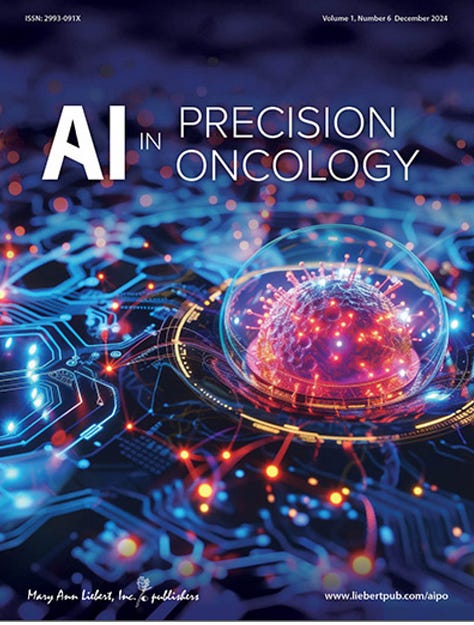
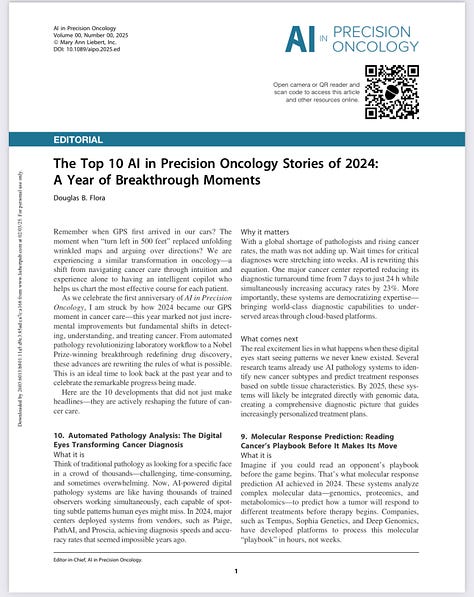
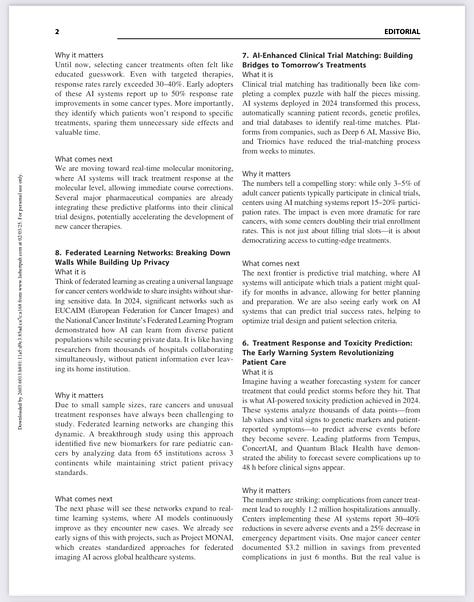
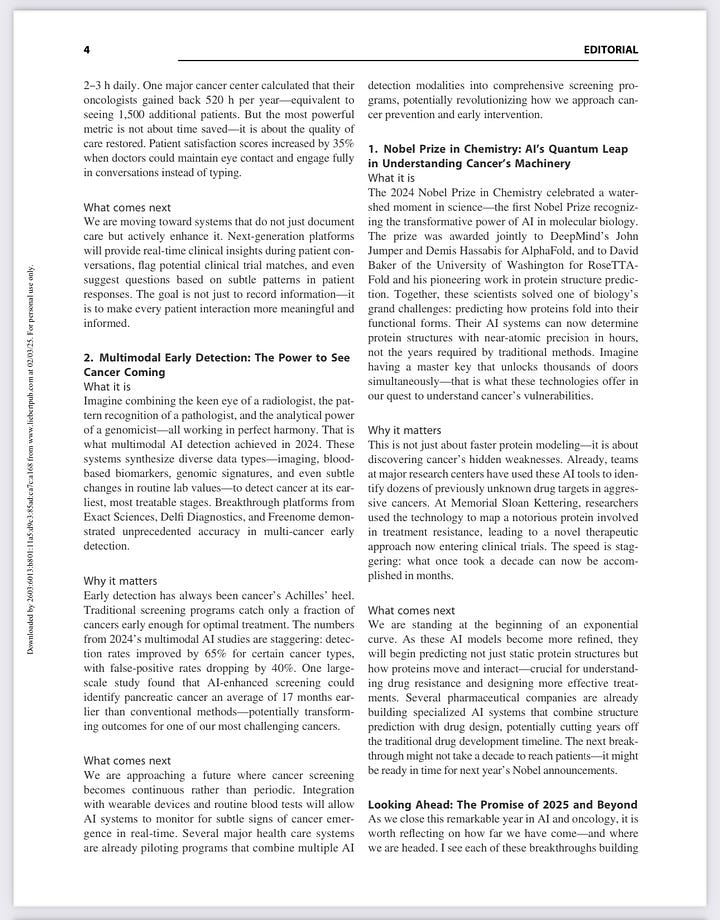
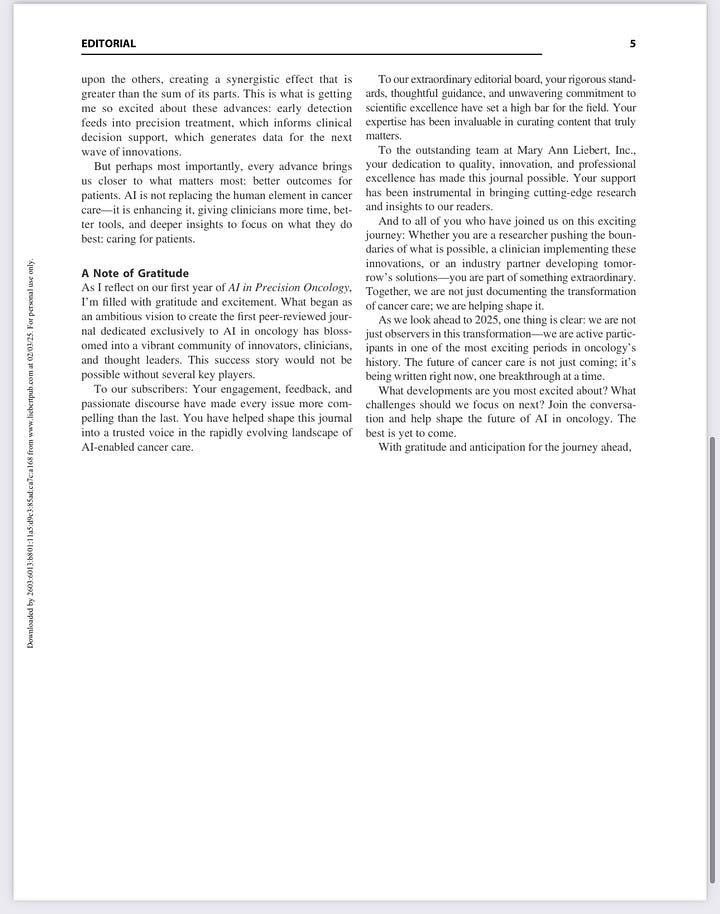
The breakthroughs this year weren’t just incremental—they fundamentally changed how we detect, diagnose, and treat cancer. For years, AI in medicine has been filled with promise, but this was the year we saw the tools mature and make their way into real-world practice.
Some of these advances were long in the making—AI-powered radiology, liquid biopsies, and predictive tumor profiling. Others felt like moonshots just a few years ago, like AI-driven clinical trials and generative AI’s role in patient care. Now, they are rapidly reshaping precision oncology.
The key shift? AI is no longer an experimental sidekick. It’s becoming a standard part of cancer care, a tool as essential as a pathologist’s microscope or an oncologist’s intuition.
In my latest piece for AI in Precision Oncology, I count down the biggest AI-driven breakthroughs of 2024—moments that moved us closer to a future where oncology isn’t just more efficient, but more precise, more personalized, and, ultimately, more effective. See comments for PDF.
What did I miss? What stood out to you in 2024? And what are you watching for in 2025?
https://doi.org/10.1089/aipo.2025.ed




